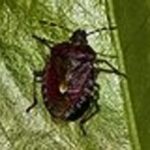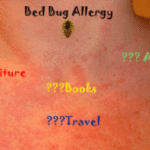Facts About Stink Bugs
Stink Bugs originated in China/East Asia and have only been introduced to the U.S. within the last twenty years. According to entomologist John Moore the exact year of introduction was 1996 in Allentown, PA. Stink Bugs get their name from an unpleasant smelling chemical they emit as a defense mechanism. When predators attempt to eat them they will almost invariably stop due to the bad smell they emit. And yes, they also emit a slight “bad smelling” odor if you step on them.
The main source of food for Stink Bugs comes from green vegetation such as leaves, grasses, shrubs and other green leaved plants. They are most active in the months of April to September as they hibernate through the winter months. When they emerge in the spring they typically will mate quickly and lay their eggs either on leaves or at the base of a plant.
Stink Bugs as Pests and How to Control Them
Stink bugs have become a major annoyance to many homeowners over the past years because they have no natural predators. As mentioned previously, they are not indigenous to the U.S. and while in China the population is controlled by a certain species of wasp, most predators here in the U.S. will not eat Stink Bugs because of their unsavory smell and taste. This has allowed the Stink Bug population to rise essentially unchecked.
As a pest they are really only an annoyance to most home owners as they do not do any structural damage to your home or property and are not known carriers of any harmful diseases. However, to farmers they can be devastating wiping out entire crops and destroying harvests.
The main concern is keeping them out of your home. Stink Bugs usually try to enter you home in late September early October as they are searching for a place where they can essentially shut down and hibernate through the winter. They best way to combat Stink Bugs is to get to them before they are in your house. A couple of things you can do to help keep them out is make sure all your window seals, door frames and air vents are all caulked properly and your screens are all repaired and without holes. If they can’t get into your home most will die with the first frost. You can also purchase light traps (they are attracted to light and usually will attempt to enter your home on the side that gets the most sunlight), these traps attract the bugs and then either trap them or kill them with an insecticide or “light zap” depending on the type. There are also insecticidal dust treatments you can get for the outside of your home which will not only kill the ones that are already there but leave a preventative residue as well.
If your infestation is large you should probably contact a pest control professional for advice. Always consult a licensed exterminator before using or applying industrial strength insecticides in or around your home. And always follow the instructions explicitly on any store bought pesticides you may try.
Sources:
Pest Control, Stink Bug, www.pest-control.com
Royal Pest, Getting Rid of Stink Bugs, www.royalpest.com





